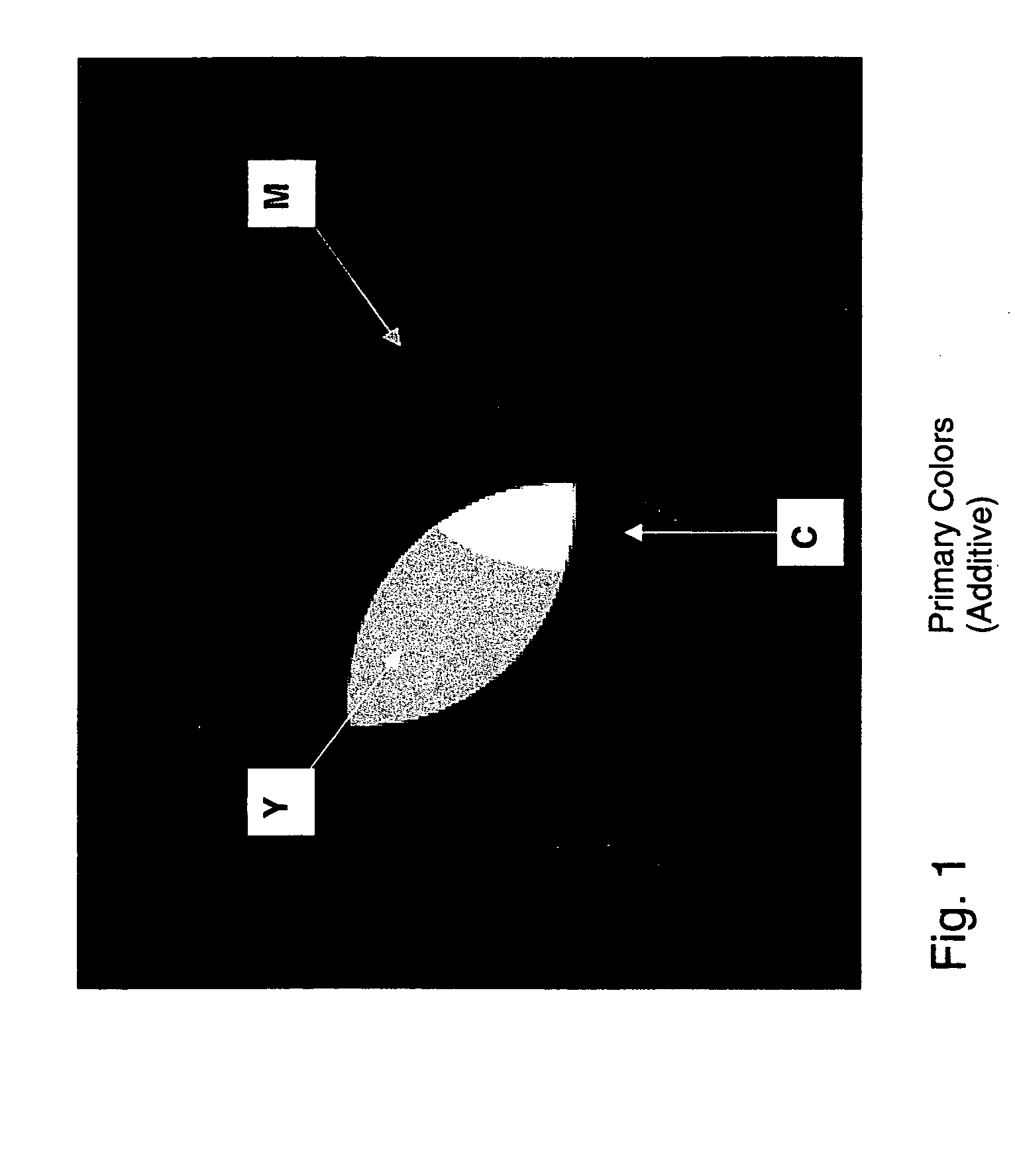Color reproduction process
a color reproduction and process technology, applied in the field of color reproduction process, can solve the problems of reducing the quality of the original color,
- Summary
- Abstract
- Description
- Claims
- Application Information
AI Technical Summary
Benefits of technology
Problems solved by technology
Method used
Image
Examples
Embodiment Construction
[0030] In the description that follows, terms such as “record”, “separation”, and “channels” will be to some extent be used interchangeably. The term “image record” dates back to the earlier days of process printing when half tone printing plates were derived photographically using contact negatives. Color produced by devices or objects that emit or generate their own light (the sun, TV, etc.) is referred to as an additive color system. Red, green, and blue are known as the additive primaries (FIG. 1). By mixing various amounts of these primaries an incredibly large number of colors can be generated and distinguished. A scene or image was recorded by taking separate photographs through red, green, and blue filters. These provided negative greyscale records of the spectral components. For example, the red record (negative) defined the amount and location of cyan ink (complimentary to red) to be printed. Similarly, the positive of the red record encoded the location and amount of red ...
PUM
| Property | Measurement | Unit |
|---|---|---|
| transparent | aaaaa | aaaaa |
| colors | aaaaa | aaaaa |
| greyscale | aaaaa | aaaaa |
Abstract
Description
Claims
Application Information
 Login to View More
Login to View More - R&D
- Intellectual Property
- Life Sciences
- Materials
- Tech Scout
- Unparalleled Data Quality
- Higher Quality Content
- 60% Fewer Hallucinations
Browse by: Latest US Patents, China's latest patents, Technical Efficacy Thesaurus, Application Domain, Technology Topic, Popular Technical Reports.
© 2025 PatSnap. All rights reserved.Legal|Privacy policy|Modern Slavery Act Transparency Statement|Sitemap|About US| Contact US: help@patsnap.com



